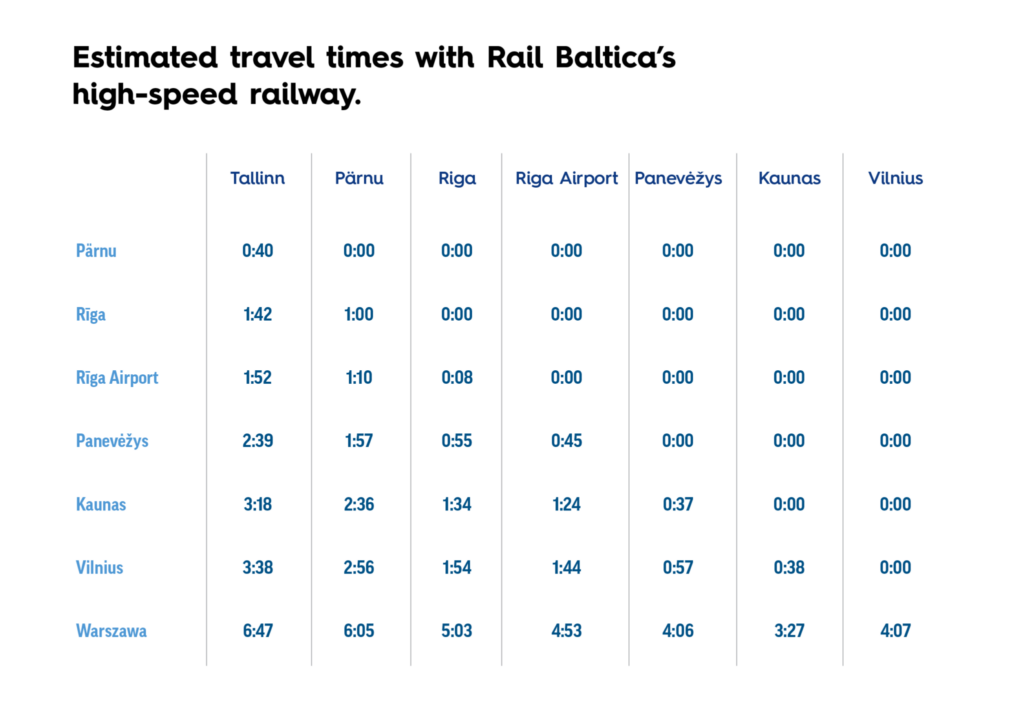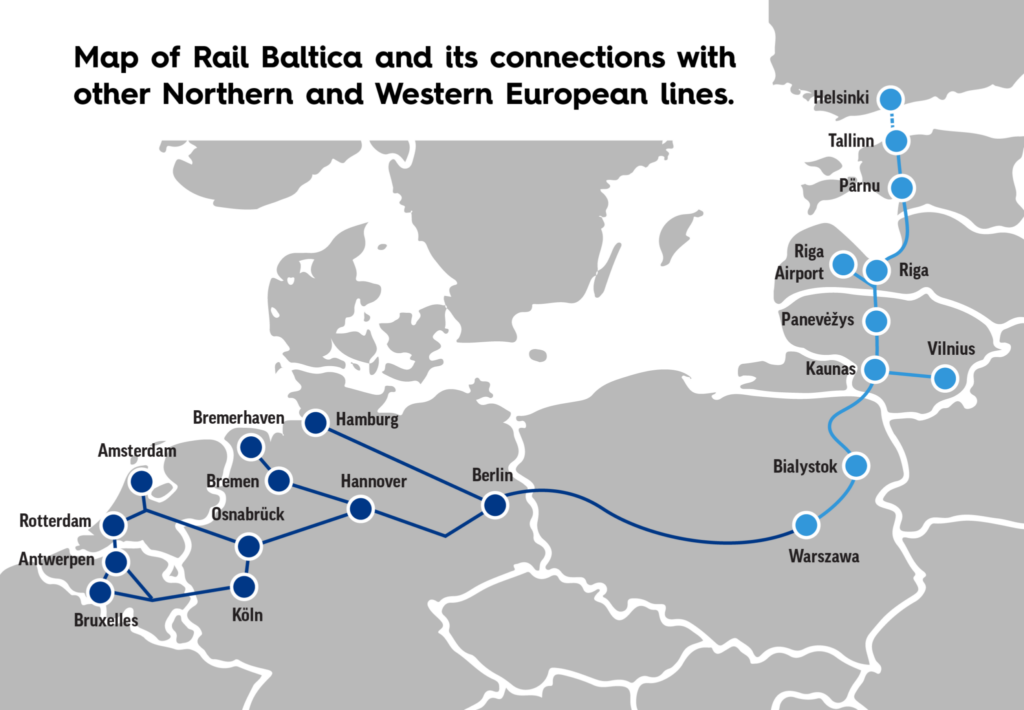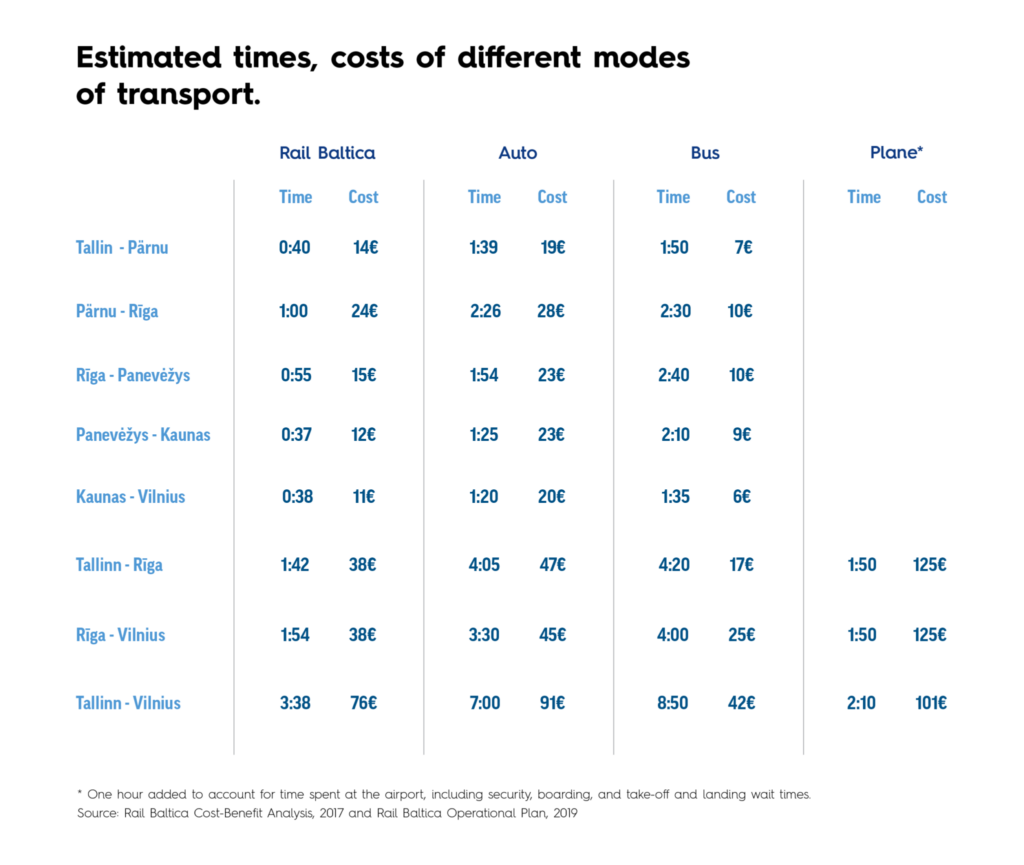Rail Baltica’s Latvian section may soar four times over budget – state TV report
Reading Time: 3 minutesA section of the Rail Baltica rail project connecting Estonia, Latvia and Lithuania faces a significant cost escalation, potentially reaching up to four times the initial estimate made six years ago, according to a new report by Latvian Television’s “De Facto” programme.
As Latvia presently uses trains from the Soviet era – unlike Estonia and Lithuania – Rail Baltica will revolutionise travel times as passenger trains reach maximum speeds of 249 km/h, and freight trains 120 km/h. The railway will also produce less pollution, as regards both emissions and noise.

However, according to the state television channel, the finances of the 265km Latvian section are soaring: while the original estimate for that stretch was around EUR 2bn, recent indications suggest that the project’s cost could total around EUR 8bn.
International tender hits EUR 3.7bn
A recent procurement concluded this week awarded the basic rail track construction to a joint French, Polish, and Italian venture “ERB Rail Baltica JV”, with a proposed price of EUR 3.7bn. Another bid of around EUR 500mn cheaper from a Turkish applicant was rejected as unsuitable.
However, there is currently only EUR 160mn available for the construction of the basic rail track with plans to construct 13km of track between Iecava and Bauska within the next two years.
Additional funding will be required, and procurement for most of the track and related objects has been postponed for at least a year.

While EUR 9bn has been allocated in the European long-term budget for “Rail Baltica” over the next five years, this will primarily cover rail tracks and related reconstructions.
Yet to be included in the total cost estimate are additional expenses for electrification, signalling, stations, cargo terminals and other infrastructure elements.
Despite the challenges and funding gaps, the 2030 completion date will require investments of approximately EUR 1bn per year, which does not align with the budgets of either the EU or Latvia.
The complexities of funding and managing Rail Baltica remain a significant concern, and discussions on how to address these challenges are ongoing within the government, according to “De Facto”.
European Railway Line board chairman Kaspars Vingris said: “as soon as we apply already this year for the next round of funding and as soon as we have the funds, we immediately order the next one, and we will order the rest in sequence, according to the availability of construction projects, money and real estate.
“We will start with the most ready stages and then with those that are workable and offer benefits, for example, the link between Riga Airport and Kaunas in Lithuania,” Vingris added.

The main objective remains to complete the basic rail track by 2030, an ambitious timeline that requires substantial funding in a short period, according to “De Facto”.
Efforts are underway to address the financial constraints, but clear solutions have not yet emerged. Detailed cost-benefit analysis results, expected next year, will provide a more accurate assessment of the project’s overall costs.
According to the original agreement signed in 2018, the three EU member states would contribute EUR 824mn towards the 870km rail project, shared between Latvia (EUR 303mn), Lithuania (EUR 286mn) and Estonia (EUR 235mn).
As per that deal, the EU would be financing 85% of the project – which will stop at 16 stations in Latvia, 12 in Estonia, and 11 in Lithuania, and also link to Poland – with the Baltic countries each covering around 5%.

